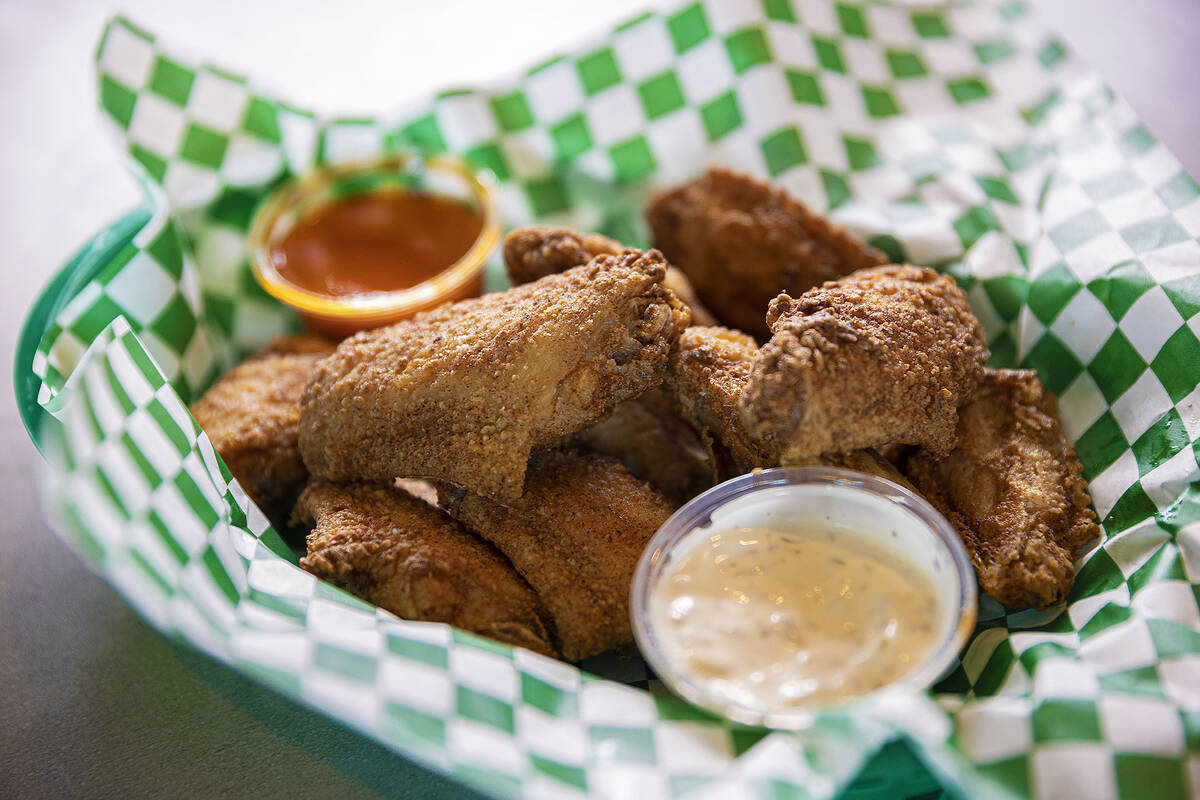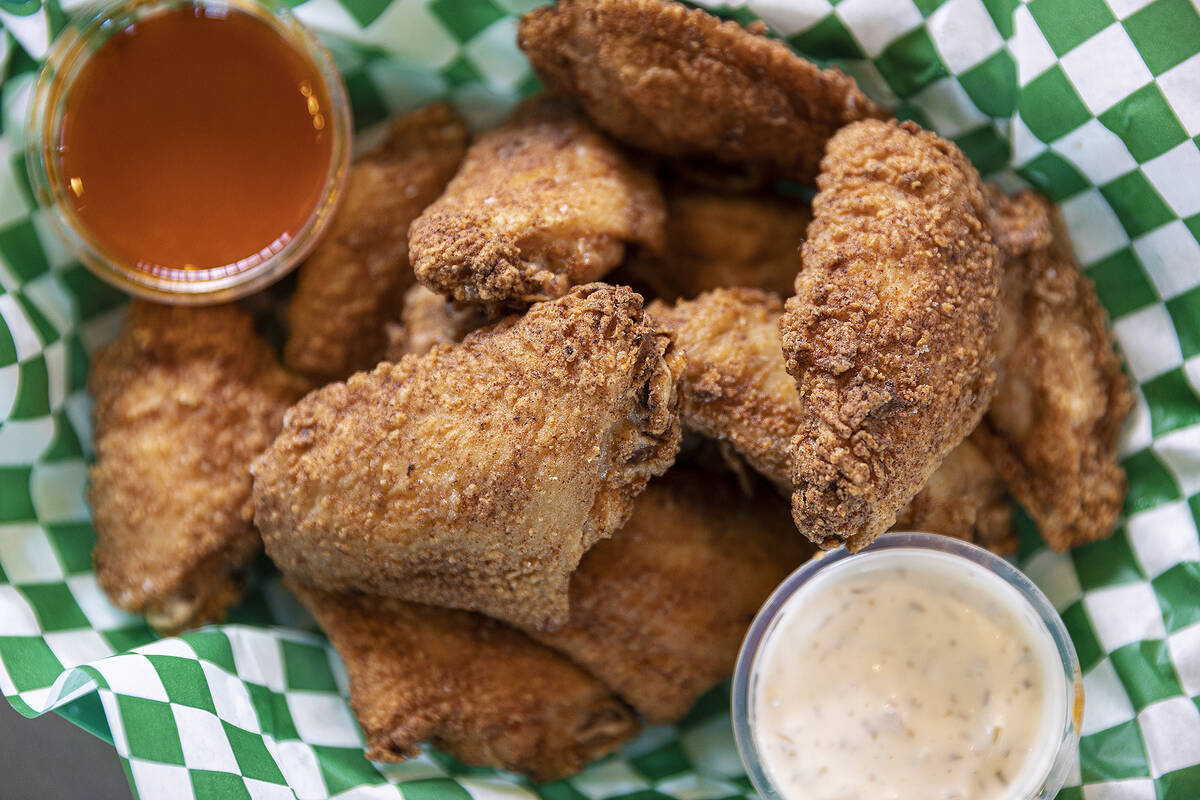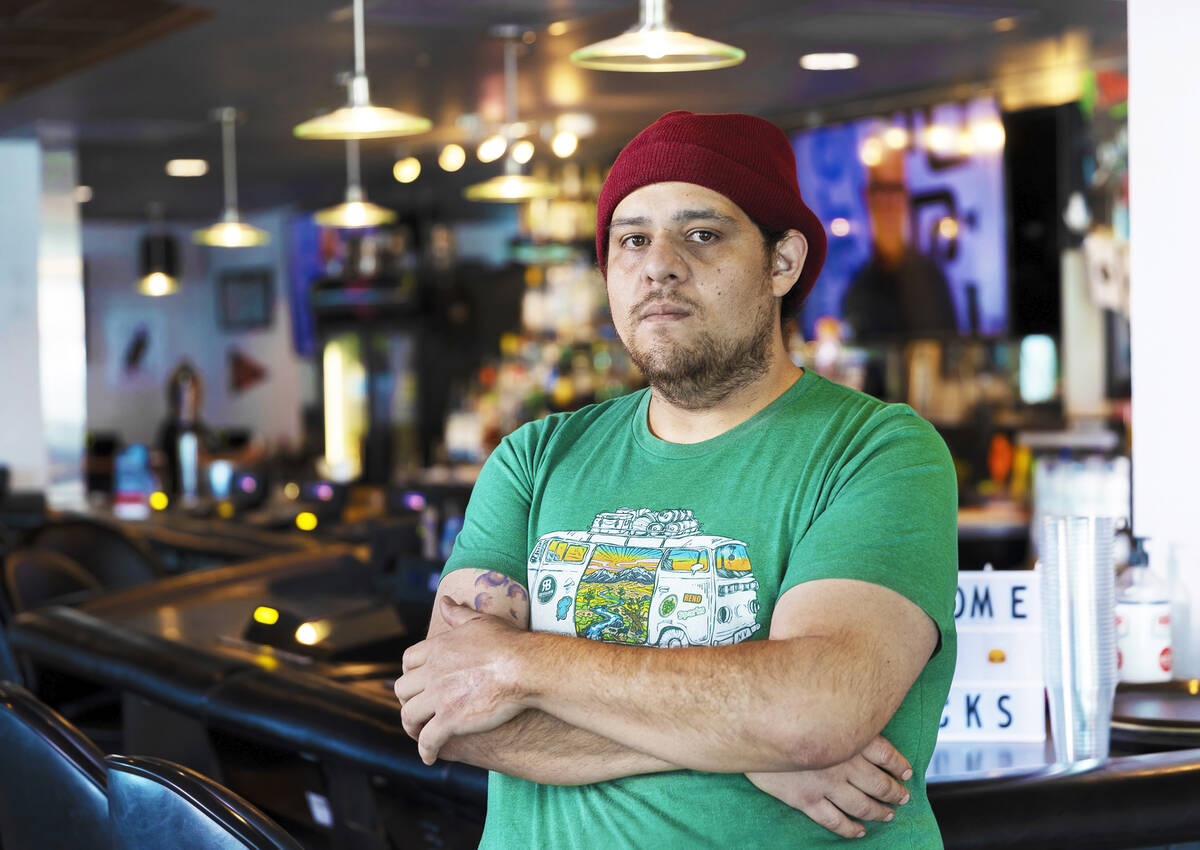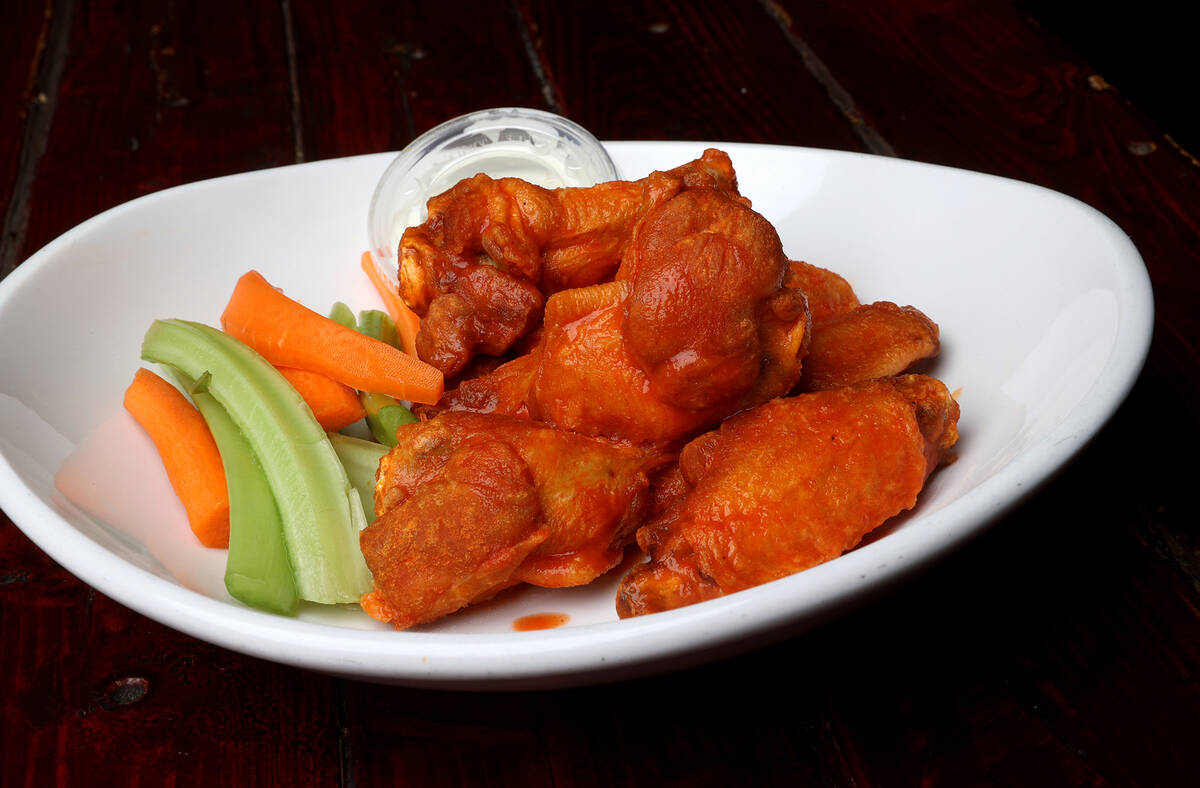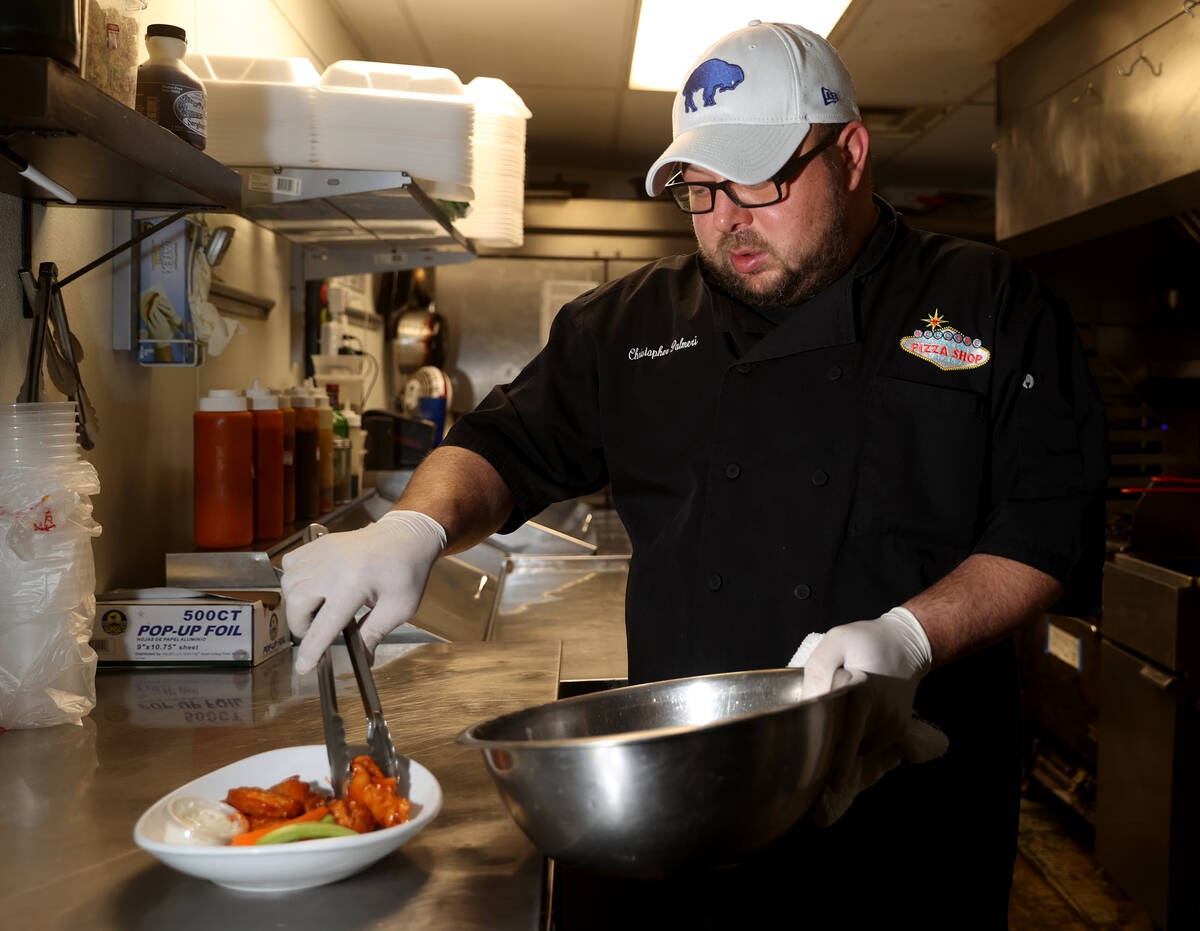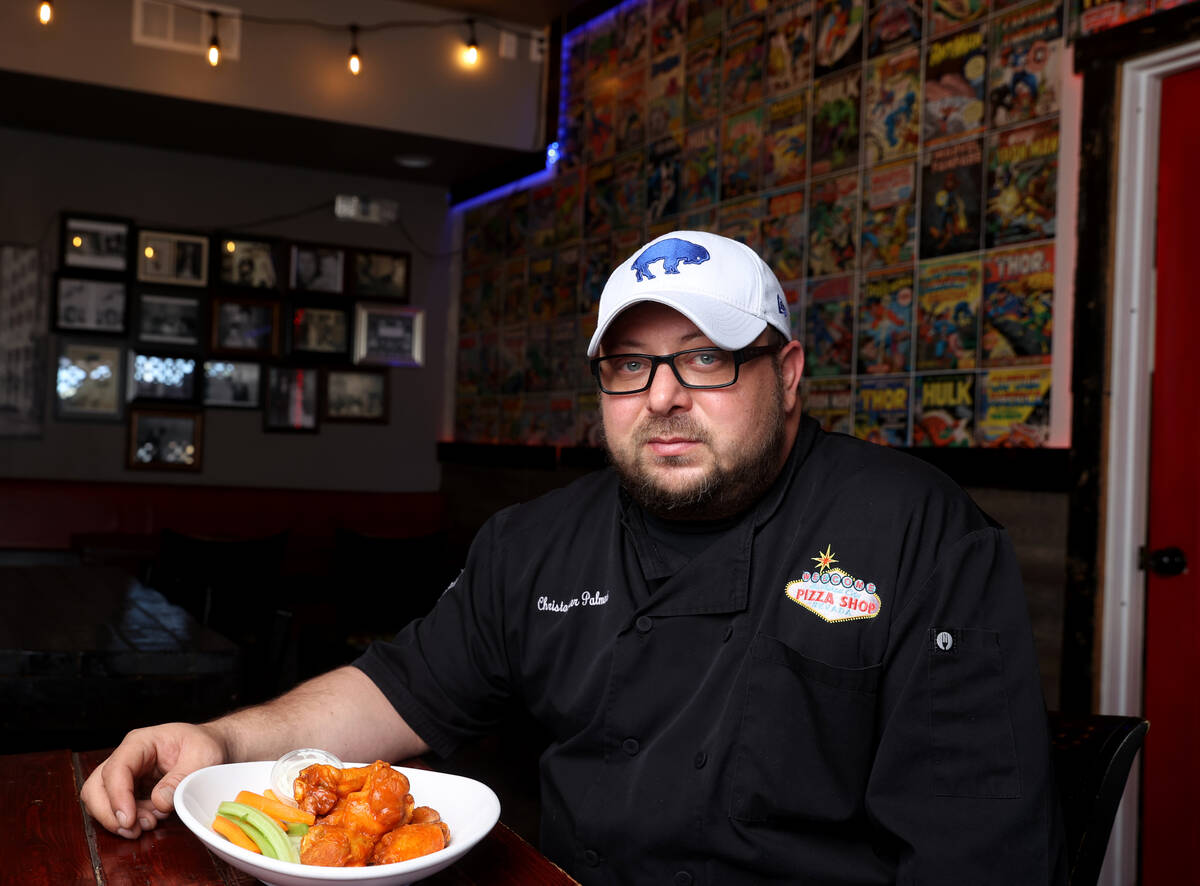Why are chicken wings so flapping expensive?
Last month, during the run-up to the Super Bowl, chicken wings became a topic of consternation for a lot of people. What used to be an inexpensive and beloved snack item has become a nearly premium product. Rising chicken wing prices have become the focus in conversations, and the pain continues.
This poultry crisis is most notable for consumers at restaurants like Las Vegas’ Naked City Pizza, 4608 Paradise Road, where owner Christopher Palmeri sells thousands of wings a month.
At the well-regarded eatery, an order of 10 wings — weighing in roughly at a pound — sells for $16.50. “Chicken wings go up every year,” Palmeri said. “We’ve noticed for a long time they’d go up a little bit. Somewhere around the Super Bowl, the price would creep up 10 or 15 cents.”
While those yearly football-driven price spikes have generally stuck, recent increases are unprecedented for his business, and he says that they started more than a year ago amid the COVID pandemic. “It launched (chicken wing prices) to the stratosphere with inflation.”
In 2020, he said, Naked City was paying about $2 a pound for wings. The recent increase is shocking: “I’ve paid everywhere from $4 to $4.50 a pound,” Palmeri said. That’s a rise of nearly 125 percent. For comparison’s sake, the Consumer Price Index, which measures inflation, was up 7.9 percent in February over the prior year, as reported by the U.S. Bureau of Labor Statistics.
These increased back-end costs have made a dent in Naked City’s bottom line, Palmeri said. “For a while, it was ridiculous. We were literally losing (money) on chicken wings.” He noted that recently wing prices have stabilized somewhat, but they have become a break-even item — even at $16.50 a pound — rather than the profit center they once were.
“Realistically, we should be charging 15 percent to 25 percent more than we’re charging,” he said.
Regardless of price problems, though, chicken wings won’t fly the coop at Naked City.
“We can never not have them on our menu,” Palmeri said. “We’re from Buffalo.”
Jordan Camacho, co-owner of Sticks Tavern, 203 S. Water St., has seen wing prices soar, too, though not as dramatically as at Naked City. That’s mainly because he sells Mary’s Free-Range Chicken, an upscale, organic brand. The niche product is less in demand than more commodity-level chicken parts, leading to less supply-side price pressure.
An order of six wings sells for $10 at the Henderson sports bar; individual wing costs for both restaurants average roughly $1.65 each.
While Sticks’ poultry costs might not be surging, Camacho says he’s seen price surges in kitchen supplies needed to cook and serve chicken wings — especially cooking oil. “It’s gone up like crazy. When we first opened, the oil was $37 for 50 pounds. Now it’s at, I’d say, $52 or $53,” Camacho said.
He also said that supplies like paper wraps and takeout containers have dramatically increased in price over the past year, as well, further cutting into his margins.
Michael Geary is general manager of Greco and Sons Inc., a wholesaler that vends case upon case of frozen wings to Naked City throughout the year. He’s contending with price increases, too.
“Costs rose to where they are at (now) six to eight months ago. That was due to labor, transportation costs and COVID,” Geary said, citing constraints at large-scale poultry producers like Tyson and Pilgrim’s. “They were shutting down their production facilities in some markets. They couldn’t keep up with demand, and that demand created extra costs.”
Geary said that, in recent months, access to poultry products has cleared up. “Recently, there hasn’t been any problem with production; there hasn’t been any problem with supply chains,” he said.
But this hasn’t translated to lower chicken costs, he added. “All meat items are through the roof — beef, pork, pepperoni, ham,” he said. “They’re not going to get any better for the short term. Inflation’s not going away; it’s only going to get worse.”
Chicken wing prices aren’t just high in restaurants; home cooks are seeing inflation in supermarket aisles, as well.
“People, when they go to the grocery store, they see that prices are going up, said Stephen Miller, professor of economics at UNLV’s Lee Business School.
“Beef and chicken and other meat-like products are substitutes for each other,” he said, making price increases generally unavoidable for shoppers. If hamburger meat, for instance, rises in price, some shoppers switch to chicken wings, which were once an inexpensive option. But this increases demand for chicken wings, so they increase in price, too.
“All the prices tend to move together in the butcher department,” Miller said.
For some, like Donovan Conley, associate professor of rhetorical studies at UNLV’s Greenspun College of Urban Affairs, there are myriad troubles in poultry economics as a whole. He says that chicken wing prices are lower than they actually should be if they reflected a full range of costs, both business-side and societal. “This to me feels like a moment of reckoning in terms of what we expect from the system,” Conley said.
He cites dangerous working conditions at poultry facilities, poor animal husbandry practices and detrimental environmental impacts as aspects of what he sees as an unbalanced and potentially unsustainable industry.
“It’s a bad economic model. I’m not surprised prices have gone up,” he said.
Reach Greg Thilmont at gthilmont@reviewjournal.com. Follow @gregthilmont on Instagram.



